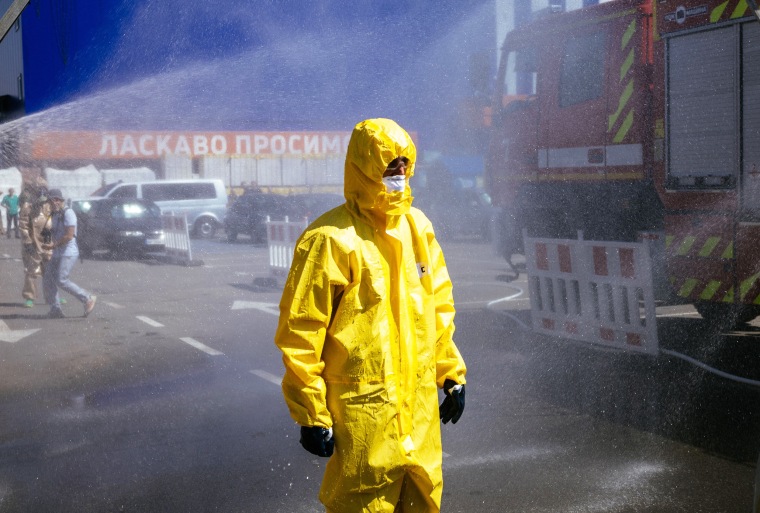There is an “urgent” need to establish a “security protection zone” at the Russian-held Zaporizhzhia power plant in Ukraine to prevent a nuclear catastrophe, the International Atomic Energy Agency declared Tuesday.
“The situation in Ukraine is unprecedented,” the United Nations nuclear watchdog warned. “It is the first time a military conflict has occurred amid the facilities of a large, established nuclear power” program, it said in a report.
A nuclear accident would be a disaster not just for Ukraine, but also for the countries “beyond its borders.”

“The IAEA is ready to start immediately the consultations leading to the urgent establishment of such a nuclear safety and security protection zone” at the plant, the IAEA said.
The dire warning from the Vienna-based organization that is not given to hyperbole came just 24 hours after the Ukrainian energy company that runs the Zaporizhzhia complex reported that the last line connecting the power plant to the Ukrainian electrical grid was disconnected after days of “intensive shelling.”
The three other lines went down earlier in the war.
“The world is once again on the brink of a nuclear disaster,” Ukrainian Energy Minister German Galushchenko said earlier on Facebook.
IAEA chief Rafael Grossi was expected to brief the U.N. Security Council on his team’s findings later Tuesday.
“The current situation is untenable and the best action to ensure the safety and security of Ukraine’s nuclear facilities and its people would be for this armed conflict to end now,” the IAEA report states.
The Zaporizhzhia plant in the southeastern Ukrainian town of Enerhodar went online in the 1980s when the country was part of the then-Soviet Union and provided up to 20% of Ukraine’s power after independence. Its six reactors generate more power than any such facility in the United States.
But it was captured in the early days of the Russian invasion, which began in February.
The IAEA inspectors made it to the Zaporizhzhia plant Sept. 1 and since then they have been evaluating the damage at the site, assessing its safety and security systems, and interviewing the Ukrainian staffers who have kept the facility going.
Before the war, the Ukrainian plant employed 11,000 staffers. How many remain was not immediately clear. But the IAEA has left two inspectors at the plant.
“The IAEA is still gravely concerned about the situation at the ZNPP — this hasn’t changed,” the watchdog group said in its report, referring to the Zaporizhzhia nuclear power plant. “The Seven Pillars have all been compromised at the site.”

The Seven Pillars refers to the IAEA’s seven core nuclear safety standards, the first of which states: “The physical integrity of the facilities — whether it is the reactors, fuel ponds, or radioactive waste stores — must be maintained.”
The West has accused Russia of heightening the risk of a nuclear disaster by using the plant as a “shield” where it stations troops and weapons — and launches attacks on other Ukrainian targets from the site.
Russia has denied the accusations and has, in turn, accused Ukraine of repeatedly attacking the plant.
The IAEA has warned that the consequences of a war-induced meltdown at the plant would be far-reaching and “much more terrible” than those from the 1986 disaster at the Chernobyl nuclear power plant near the northern Ukrainian city of Pripyat.
That catastrophe sparked the evacuation of more than 100,000 people living near the plant and resulted in a radioactive cloud that drifted across most of Europe and was blamed for cancer spikes — especially in children — in both Ukraine and neighboring Belarus.
The Zaporizhzhia plant is almost twice the size of Chernobyl, although its reactors are more modern, experts told NBC News earlier.





